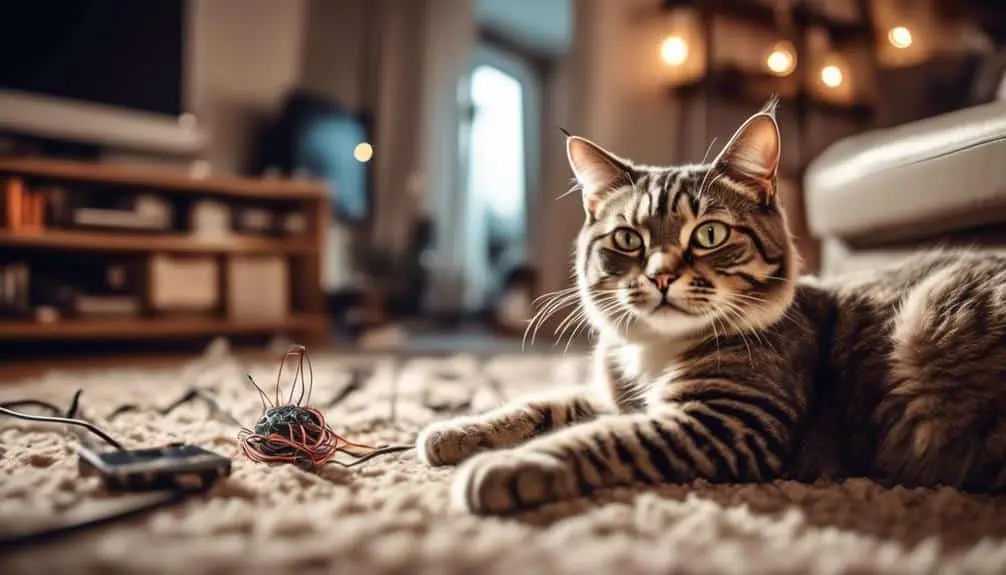The Best Fluffy Pancakes recipe you will fall in love with. Full of tips and tricks to help you make the best pancakes.

Welcome to this informative discussion on the potential dangers of insulation for our beloved feline friends. As responsible pet owners, it is crucial for us to understand the risks associated with insulation and take necessary precautions to protect our cats.
In this article, we will explore the various ways insulation can pose a threat to our furry companions, including both immediate and long-term consequences. We will also discuss the potential toxicity of different insulation materials and the importance of prompt veterinary assistance if ingestion occurs.
By the end of this discussion, you will have gained valuable insights into the dangers of insulation for cats and learned practical strategies to ensure their safety.
Key Takeaways
- Cats should be kept away from insulation to prevent ingestion and skin irritation.
- Foam insulation is toxic if consumed by cats and immediate veterinary assistance is necessary.
- Older insulation may contain asbestos, which is highly toxic and professional assistance should be sought when renovating older homes.
- It is important to provide cats with alternative toys and activities to divert their attention from insulation and prevent interaction.
Effects of Insulation on Cats
The effects of insulation on cats should be approached with caution, as certain types of insulation can lead to potential health risks for feline companions.
While insulation itself is not harmful if cats only touch it, ingesting insulation can cause gastrointestinal blockage and discomfort. Inhaling airborne dust from insulation can also irritate the lungs, nose, throat, and eyes, resulting in symptoms such as itching and coughing. These symptoms usually subside after a few hours, but if irritation persists, it is recommended to seek veterinary care.
It is important to note that foam insulation is toxic if consumed by cats, and immediate veterinary assistance is necessary in such cases. Additionally, older insulation may contain asbestos, which is highly toxic, and newer insulation can also contain harmful chemicals if ingested.
Therefore, it is crucial to consider insulation alternatives and be aware of the potential health risks for cats.
Toxicity of Insulation
Given the potential health risks associated with certain types of insulation for cats, it is essential to understand the toxicity of insulation and its implications for feline companions.
Insulation toxicity poses significant health risks for cats, particularly when it comes to ingestion. Immediate veterinary assistance is necessary if a cat ingests insulation, as it can cause gastrointestinal blockage and discomfort.
Foam insulation, in particular, is highly toxic if consumed by cats. However, it is important to note that all types of insulation, not just foam, can cause toxicity if eaten. Older insulation may contain asbestos, a highly toxic substance, while newer insulation can contain harmful chemicals if ingested.
Recognizing the signs of insulation poisoning in cats, such as agitation, diarrhea, vomiting, and seizures, is crucial in seeking prompt veterinary care to prevent serious complications.
Signs of Insulation Poisoning in Pets
Signs of insulation poisoning in pets can manifest as a range of symptoms including agitation, bruising, diarrhea, drooling, problems peeing, seizures, vomiting, and wobbling when standing.
It is important for pet owners to recognize these symptoms and seek immediate veterinary care if their cats have been exposed to insulation. Cats are skilled at hiding their symptoms, making it crucial to be vigilant and observant.
In addition to the aforementioned symptoms, cats may also experience skin problems such as irritation and redness if they come into contact with fiberglass insulation. Immediate veterinary attention is essential to prevent serious complications.
When it comes to cats exposed to insulation, prompt action and professional care are necessary to ensure their well-being.
Safe Insulation Options for Cats
Safe insulation options for cats should be carefully considered to ensure their well-being and minimize the risks associated with exposure to insulation materials. When building a cat house, it is advisable to use straw or similar materials as safer alternatives to commercial insulation. Blankets, towels, and newspapers are not effective insulation materials for cats.
It is important to seek professional assistance when renovating older homes to check for the presence of asbestos, which is highly toxic. Straw alternatives provide a natural and non-toxic option for insulating cat houses, while minimizing the risk of ingestion or skin irritation.
Preventing Cats From Interacting With Insulation
To ensure the safety of cats and minimize their exposure to insulation materials, it is essential to implement effective strategies that prevent cats from interacting with insulation. Creating a safe environment for cats involves training them to stay away from insulation. Here are some strategies to consider:
- Install doors, gates, or barriers to block access to areas with insulation.
- Provide cats with alternative toys, scratching posts, and interactive games to divert their attention from insulation.
- Cover insulation with barriers like chicken wire or mesh if blocking access is not feasible.
- Supervise cats when they are in areas with insulation to redirect their attention if needed.
Conclusion
In conclusion, it is crucial for cat owners to be aware of the potential hazards of insulation and take necessary precautions to protect their feline friends.
Insulation can pose various risks to cats, including physical contact, ingestion, and inhalation. Different insulation materials may also have varying levels of toxicity.
By recognizing the signs of insulation poisoning and implementing safe insulation alternatives, cat owners can create a secure environment for their pets.
Taking proactive measures will ensure the well-being and safety of our beloved feline companions.








